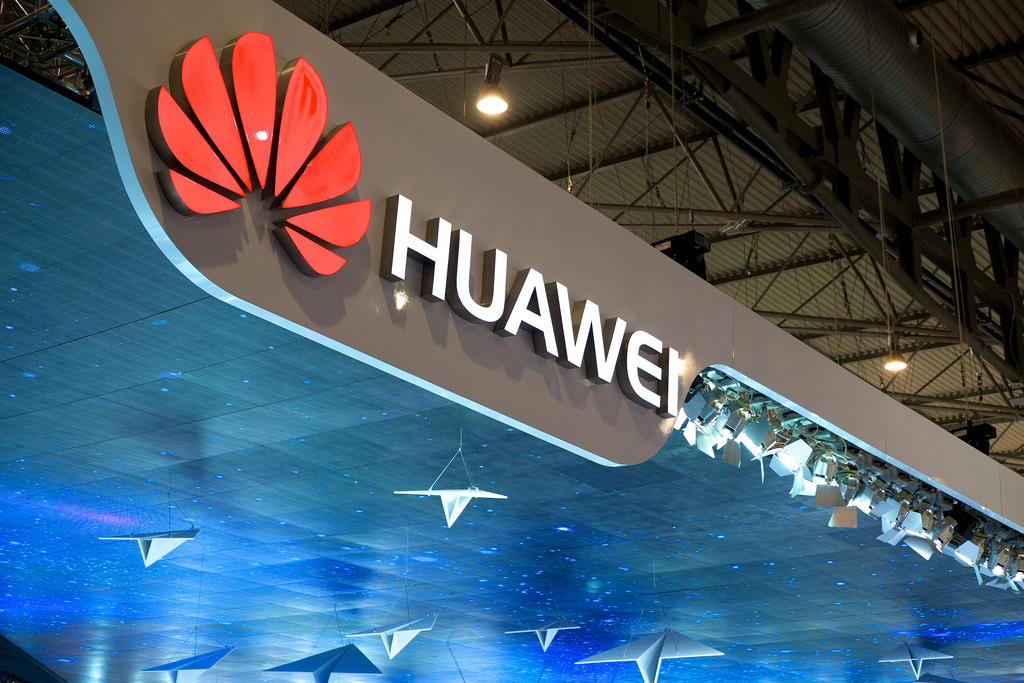Internet
Internet
Internet of Things
Western Digital: Maximising user experience in the 5G era
Western Digital Corp says it’s enriching smartphone users’ mobile
experience in the 5G era with a new embedded flash drive (EFD) that provides
the speed and capacity necessary to maximise the capabilities of ultra-high-end
smartphones and mobile devices. Built on the company’s 96-layer 3D NAND, the iNAND
MC EU511 supports
Universal Flash Storage (UFS) 3.0 Gear 4/2 Lane specifications. The advanced iNAND SmartSLC Generation six propels
turbo sequential write speeds up to 750MB/s, enabling a 2-hour movie
download in only 3.6 seconds.
The 5G standard
promises ultra-fast transfer speeds, low latency, lower power consumption and
high network capacities for all mobile and edge devices. These capabilities
necessitate the high-speed data interfaces, such as UFS 3.0, transforming not
only smartphones but billions of interconnected Internet of Things (IoT)
devices.
“Smartphones are increasingly becoming the hub of all things connected,” says Oded Sagee, Senior Director, Devices, Western Digital. “High speed 5G networks are set to deliver data at up to 100X the speed of previous generations and amplify AI on many devices. Artificial Intelligence (AI) powered by integrated neural processing units (NPU) with access to big and fast data will transform how we use our smartphones. Real-time computing on the edge will be in such high demand that high standards of data capturing and accessing are fundamental. With our UFS 3.0 embedded flash drive, we are enabling users to experience the new power of 5G applications, on-demand, seamlessly and instantaneously.”
Powered by the higher performance of a UFS 3.0 flash interface, 5G mobile devices will provide greater performance and lower latency for applications such as augmented reality, virtual reality (AR/VR) and mobile gaming. Additionally, high network speeds will enable consumers to quickly download and view ultra-high-resolution photos and 4K/8K media on mobile devices.
DCNN staff - 26 February 2019
Cloud
Internet
Cloud Technology Solutions announces higher education collaboration with Google Cloud
Cloud
Technology Solutions (CTS) has been selected by Google Cloud as their partner
of choice for all higher education Google Cloud Platform (GCP) opportunities in
Europe, the Middle East and Africa.
Headquartered
in Manchester, CTS says it became the largest dedicated Google Cloud practice
in Europe following its recent merger with data science specialist Qlouder. The
company also professes to have migrated more than eight million users to the
cloud since 2008 under its CloudM brand, and says it offers an end-to-end
solution for its clients, encompassing modernising infrastructure and
transforming working through to innovative data solutions.
GCP’s
suite of cloud solutions for storage, compute, big data and machine learning
can support higher education by allowing for the latest technological
infrastructure and research.
Implementing
the latest IT infrastructure is said to enable educators to spend less time
managing resources and more time supporting students. Additionally, powerful
tools such as Compute Engine virtual machines, BigQuery and TensorFlow can
enable students and researchers to perform fast analysis and scale with ease.
Commenting on why CTS was chosen as the higher education partner, Brian
Gibson, Google Cloud Higher Education & Research Sales Lead for Europe, says,
“Making technology more widely available to the research and education
community is something we believe in deeply as a company. We are proud to be a
part of this unique cloud offer for the European Research and Education
community through GÉANT and our choice of CTS as a partner to make this a
reality was the ideal fit. Our collaboration with CTS will deliver a complete
range of Google Cloud services across the research and education
community."
James Doggart, CEO and founder of Cloud Technology Solutions, adds,
“We’re thrilled to have been chosen as Google Cloud’s partner for GCP higher
education, allowing us to further expand on our existing portfolio of services.
“As the education system continues to evolve, institutions across the globe need to respond to these changes to
ensure they get the most out of the latest infrastructures. GCP allows for the
adaptations needed in higher education to facilitate the next generation of
researchers and, as always, our customers can expect the same quality service
as with our existing projects.”
DCNN staff - 13 February 2019
Internet
Networking
Wi-Fi
BT calls an end to Wi-Fi black spots with ‘Complete Wi-Fi’
BT announces that is to be the first broadband provider in the world to guarantee customers a strong reliable connection in every room of their home with the launch of Complete Wi-Fi. BT say its Complete Wi-Fi is part of its commitment to keep customers connected and provide them with best connections, in and out of the home.
Unlike current Wi-Fi extenders, Complete Wi-Fi from BT is said to use unique Wi-Fi Discs which pair with BT’s new Smart Hub 2 to create a single seamless, powerful Wi-Fi network in a customer’s home. The company say not only will customers get wall-to-wall coverage, they’ll also get faster Wi-Fi speeds, allowing them to stream HD video content in more places around the home. With a four-bedroom home potentially seeing an increase in Wi-Fi speeds of up to 25% around the home with just one disc.
With BT’s new Complete Wi-Fi customers are said to be able to quickly and easily set-up their network from their smartphone with the My BT app. The company say it will allow them to make sure they’re getting the strongest signal around their home – directing them where to place their Wi-Fi Disc and check the strength of their Wi-Fi signal in every room.
To coincide with the launch of Complete Wi-Fi, BT has commissioned what it declares to be a ‘first in-depth report’ on how UK families are using their homes; highlighting the need for strong, reliable connectivity to make the most out of every single room. The company says its research also found that 43% of families agree their Wi-Fi connection restricts what they want to do throughout the home with 56% strongly valuing the ability to get online anywhere in the home. Half of families (52%) are put off living, or buying, a home with Wi-Fi black spots with 12% admitting they argue with others in the house about Wi-Fi.
Marc Allera, CEO of BT’s Consumer business adds, “Strong, reliable Wi-Fi has never been so important in the home, with families using even more connected devices and wanting to make the most of every room in the home. We’re the first broadband provider in the world to launch a Complete Wi-Fi guarantee so customers can get online from every corner of their homes. Whether it’s converting the attic into an online gaming room for the kids or making a spare room into a home gym where you can stream music or work out videos, our unique Complete Wi-Fi opens up a world of possibilities for our customers.”
BT Complete Wi-Fi guarantee
With Complete Wi-Fi, a BT customer will receive a next generation Smart Hub 2 and one Wi-Fi Disc to extend their wi-fi signal around their home. If this doesn’t give customers a strong signal in every room, they will receive up to two more discs free of charge. If they still don’t have signal in every room, BT will give them £20 back.
Next generation Smart Hub
BT proclaims its next generation Smart Hub 2 is the most advanced router available from a broadband provider and comes with a combination of unique features to deliver fast speeds throughout the home. The Smart Hub 2 provides 7 antennas uniquely positioned to maximise power, the latest Wi-Fi technology, smart channel selection, smart scan and clever app-based services to help them set up and manage their home Wi-Fi.
Pricing
Complete Wi-Fi will be available for existing BT Plus customers for an additional £5 per month. Existing non-BT Plus customers will need to upgrade to a BT Plus package.
DCNN staff - 28 November 2018
Data
Internet
Innovation for the ageing population
We will soon be riding the next generation wave of wireless technology, fittingly known as 5G, as well as seeing cities become smarter and changing our travel habits with autonomous cars. With such advancements, it is now more important than ever to consider older generations; their vulnerability, resistance to change, and their ability to adapt accordingly with the technological advancements the future promises.
It’s common knowledge that the UK’s population is getting older, with growing improvements in healthcare and lifestyles this should come as no surprise; in 2016 in the UK, 18% of people were aged 65 and over. As the age dependency ratio (OADR) is also increasing, a useful measure when trying to plan for the needs of different age groups, it is important that there are services that can accommodate older, more ‘vulnerable’ consumers; ensuring that they also benefit from 5G, smart products, the IoT and AI.
The International Longevity Centre UK and Just Group highlighted this issue and have since announced its Innovation for Ageing competition shortlist, for which it received a total of 77 submissions. The companies say that the competition aims to identify solutions to address the challenges faced by consumers in later life.
While not all submissions focus on technology it was inspiring how many were linked; from using AI-enabled voice control helping families take an active role in planning and managing care; a mobile network for the elderly; to, digital health monitoring and alerting analytic software that ingests data from a number of fixed wearable smart devices to signal a decline in an individual’s wellbeing.
The 12 shortlisted entries respond to specific problems identified by experts as common cause of vulnerability and are listed below:
• Behavioural Insights Team
• Chatty Cafe Scheme
• Digital Care Planning
• Echo
• Ferret Information Systems
• Fuss Free Phones
• MorganAsh
• MyCareMatters
• MySense
• Society of Later Life Advisers (SOLLA)
• Toucan
• Walk With Path
David Sinclair, director of ILC-UK, comments on the announcement of the shortlist, “Innovating for Ageing was set up to ensure the best new ideas are applied to problems known to have the worst impact on vulnerable older people. The response has been superb, as has been the quality of submissions received.”
DCNN staff - 22 October 2018
Internet
Networking
Embracing the next era of connectivity
New
research commissioned by international law practice Osborne Clarke has
revealed that businesses in Germany and the Netherlands could be leading the
global race to embracing next-generation connectivity. The Next Generation
Connectivity research of executives and managers from 11 countries,
conducted by the Economist Intelligence Unit, has also revealed that approaches
and attitudes to adopting connectivity vary country to country. This, Osborne
Clarke says, could hinder future opportunities.
Interestingly across the global businesses surveyed, those in Germany and the Netherlands were found to be the most advanced in their adoption of connectivity. What’s more, executives from these countries were found to most likely think that connectivity – including 5G – is important to their business; they were also the most positive about the business applications greater connectivity enables.
Jon Fell, partner at Osborne Clarke says, “There is a great deal of optimism among businesses around the adoption of next-gen connectivity – and rightly so. With greater speeds and capacity, along with lower latency, companies can transform how they do businesses and enable new applications – whether that’s driverless car technology, remote surgery, sophisticated real-time drone management or even building smart cities.”
Preparing for the future
In preparation for the introduction of next-generation connectivity the research unearthed that businesses in Germany were most likely to have adopted a formal strategy; with over two fifths of German executives (44%) saying their business has done so, compared to just 22% of Chinese respondents. In fact, according to Osborne Clarke, 36% of German executives say their business has already built a stand-alone division to prepare for the adoption of next-generation connectivity.
US businesses, too, have made significant steps to prepare for the adoption of greater connectivity, with half of US executives (50%) saying they have already made investments in preparation – the highest number across all countries. In comparison, just 18% of French businesses and 24% of Chinese businesses said they had made such investments.
Commenting on these findings Jeremy Kingsley at the Economist Intelligence Unit says, "In Europe there have been concerns from carriers about the business case for next generation connectivity –particularly 5G – and investment has been slower than in US. In China too, we've seen that the Chinese government and telcos have spent a lot investing in 5G infrastructure, much more so than the US. However, our research shows that while China is spending more on infrastructure, Chinese businesses are spending less preparing for it.
“5G will enable all
kinds of opportunities and innovative use cases that are up to businesses to
anticipate or invent. Few saw Uber or Spotify coming as a result of earlier
generation connectivity. Demand will come from new use cases that stem from
business innovation.”Jeremy Kingsley at the Economist Intelligence Unit
Addressing the skills gap
Uncovering the connectivity barriers further, research statistics say that more than two in five respondents globally (42%) say talent and skills is a significant barrier their organisation faces with regards to next-generation connectivity. In the UK, especially, business executives were the most likely to say they do not have the talent or skills they need to capitalise on next-generation connectivity, despite UK respondents being most likely to believe connectivity will be more important in the next five years (92%).
Whilst businesses in the Netherlands appear to be tackling this problem head-on, with 44% of respondents saying their organisation has hired new talent in preparation for the adoption of next generation connectivity – significantly higher than the global average of 26%.
Barriers to overcome
In addition to skills and talent, business executives and managers identified further challenges preventing them from adopting next generation connectivity. The costs required for investment infrastructure topped the list, with 44% businesses citing this as a main barrier to embracing connectivity, followed by a lack of talent and skills (42%) and security concerns (39%).
Concerns over data protection and privacy were also a top concern for those in digital businesses, with 41% of executives in this sector identifying this as the main barrier to adopting greater connectivity.
Fell continues, “There is, of course, the risk that greater connectivity will lead to more opportunity for cyber-criminals to gain access to a company’s network and data. We shouldn’t, however, let this fear of the unknown hinder adoption. Instead, businesses need to take the steps to prepare, enabling them to respond to threats much more quickly in this new age of connectivity.
“Reaping the benefits of this golden era of superfast, always on, ubiquitous connectivity will certainly require investment, new partnerships, and redesigned approaches to security and data protection – but it will be worth it.”
In fact, the research finds that 87% of global businesses believe greater connectivity will be strategically important to the running of their business by 2023. Nearly seven in 10 businesses (69%) believe that next-generation connectivity will have the greatest positive impact on the level of customer service and support it delivers. Furthermore, 67% of businesses say that greater connectivity will positively impact supply chain management and 64% say it will improve employee productivity.
DCNN staff - 18 October 2018
Infrastructure
Internet
Nexans: Modernising a mythical city
At the beginning of 2018, the Athens Municipality launched its Digital Roadmap, a plan aimed at modernising internet infrastructure of the city with over 3,000 years of history. In the framework of this programme, the capital of Greece intends to digitalise its administration and build state-of-the-art communications infrastructure, including in some of its most important historical buildings. In order to upgrade the network of the City Hall, Nexans has provided the Athens Municipality with specialised cutting-edge Fibre To The Office (FTTO) solutions, including micro-bundles and accessories.
To guarantee a high-speed internet connection and provide advanced IT-based services for the employees of City Hall, Nexans says it deployed a powerful physical infrastructure based on fibre optic technology both inside and outside the building. The indoor fibre cables with micro-bundles and accessories manufactured by Nexans were also coupled with connectivity and LANactive FTTO switches, as well as the LANactive NEXMAN management software.
Nexans believes its solution is a flexible and future-proof
networking system that can adapt to the constantly changing operational needs
of City Hall thanks to its scalable and modular structure. The company says its
fibre optic cables were designed specifically to have a reduced volume to allow
for an easy installation within the restricted space available, and are both
fire resistant and halogen-free. Compared to traditional LAN, Nexans voices
that its fibre optic solution provided Athens Municipality with energy savings
up to 45%.
“The City of Athens has adopted FTTO as the most cost effective and energy efficient network technology for our buildings. Our digital transformation is embracing all of our employees and citizens as we try to provide advanced IT-based services for all,” says Konstantinos Champides, chief digital officer for the Athens Municipality. “Thanks to Nexans, we now have a best-in-class cabling infrastructure to support our needs for the next 25 years and enable the implementation of our digital roadmap.”
Marcel Reifenberg, technical support/software development manager at Nexans adds, “Despite the challenges of working in a historical building with limited space for installation, Nexans was able to successfully deliver the project on schedule – and without closing the building while the installation work was carried out.”
DCNN staff - 16 October 2018
Internet
Telecoms
Huawei: 5G is now
5G will see the number of global telecom sites increase dramatically, and the network power consumption will be doubled.
Recent research conducted by Huawei found that more than 70% of the sites will face the challenge of insufficient capacity of power, battery and distribution, and more than 30% of the sites need grid modernisation, which will definitely bring high CAPEX to carriers. As the power supply of the network, how can the telecom companies achieve efficient and smooth evolution in a 5G era to cut down the CAPEX and shorten the time to market? How do the companies effectively manage the massive sites to reduce OPEX? How do they improve energy reliability to meet high reliability and low latency of network business needs? According to Huawei these are the problems that carriers need to address squarely.
To this end, Huawei said it launched its 5G Power series solutions to ensure that energy evolution is simpler, more reliable and more efficient in the 5G network process. Huawei believes that site synergy, network synergy and business synergy will be the direction for telecom energy in the future. All equipment will be synergic from end-to-end and help carriers improve energy efficiency and reduce OPEX. Huawei says its 5G Power solution provides a scalable energy solution for newly built sites and sites that have undergone modernisations. With the design concept of ‘one site, one cabinet’ and ‘one band, one blade power’, the Huawei Power series is said to adopt innovative technology of peak shaving, linked voltage boosting and energy slicing, and fully considers the capacity expansion of cooling and battery backup. Facing the capacity expansion requirement in the future, the maker says its 5G solution enables carriers to avoid energy modernisation and get 5G network overlaid quickly.
Tao Hongming, president of Huawei telecom energy business, remarked at the launch ceremony, “Based on deep understanding of pain points carriers are facing in the progress of network evolving, Huawei 5G Power Solution achieve end-to-end synergy from wireless network to telecom energy, which will further enable carriers to build networks quickly, reduce site energy consumption, and maximise their investment value. As a telecom energy supplier who is able to provide end-to-end ICT solutions, Huawei is willing to work with carriers and industry partners on continuous innovation and exploration, and jointly solve the energy challenges in 5G era.”
DCNN staff - 16 October 2018
Internet
The internet: To regulate or not to regulate
Earlier this month the Communications Committee took
evidence from representatives of Ofcom, the UK’s communications regulator, and
the Competition and Markets Authority (CMA) as part of its inquiry into
internet regulation. The inquiry explored how the regulation of the internet
could be improved, including through better self-regulation and governance.
In the initial address to the House of Lords Communications Committee, representatives of Ofcom and the CMA discussed their roles in regulating the internet in the modern digital economy, as well as what needs to be done in order to ensure that the internet serves the public better.
With a view that internet regulation would be more effective
if the government developed legislation that an independent body could enforce,
Kevin Bakhurst, group director content and media policy at Ofcom, noted that
this project would be a ‘useful blueprint’ for how the UK could begin thinking
about regulating the internet.
Voicing that it is the government’s responsibility to create the framework, Bakhurts said that there are a ‘number of principles you could set as a framework’, of which cover the areas of the internet that require independence or regulation.
Bakhurts added, “Regulation only works if it has statutory
backing and has a clear remit from parliament in the UK, and then has a trusted
independent body that will interpret that and set a clear set of rules.”
Though Bakhurst recognises the crossover between areas controlled by regulatory bodies he admitted, “Much of the online content and social media is simply not covered by anybody at the moment.”
Mind the gap
The inquiry identified a significant gap in regulation between broadcasters and those who produce online content.
In previous research Ofcom identified the gap in regulation between broadcasters and those who produce online content, be that social media sites or streaming services. Corroborating this Bakhurst added, “Broadcasters are held to the highest standards.”
“The protections around online content are obviously designed at the moment around terrorist content and protecting young people.” Kevin Bakhurst, group director content and media policy at Ofcom
With online content playing by a different set of rules all together, broadcasters are keen to close the gap. Bakhurst said it is up to the government to decide, regulation or otherwise. Naturally, the pace of technology is continuously adapting, which directly affects the online world, so any such regulation, if enforced, would need to be flexible and reactive.
Mirroring this concern about such gaps, Andrea Coscelli, CEO of the CMA, said, “What worries me more now is the potential gaps in regulation, as opposed to lack of bodies coordinating.”
Coscelli went on to note that the CMA tried to look into these gaps but stated that ‘responsibility for identifying such issues, strictly speaking, should sit more in government’. He later added that the CMA and other bodies should be ‘adding value’ to government decisions.
Once recommendations were voiced and accepted, Consceli said, “We don’t see our role as ending with the delivery of a report.”
Ultimately, it’s a question of whether it is remotely possible to enforce such regulations, and, with technology adapting at a fast rate, whether issues surrounding freedom of speech, data protection, and privacy in a social media world can indeed be regulated successfully.
DCNN staff - 16 October 2018
Internet
Virgin Media Reveals Plans For Fastest Widely-Available Broadband Service In UK
Virgin Media could soon overtake BT to offer the fastest widely-available broadband service in the UK. That’s after the company announced plans to launch a 350Mbps service, which will be available to both new and existing customers.
Technically this isn’t the first time Virgin Media has offered speeds of up to 350Mbps. In fact, some customers have already been given the option to upgrade their packages to the faster speeds. This further roll-out will ensure it’s available to all.
It’s not known how many customers will be able to take full advantage of the 350Mbps service, although it’s likely to be vastly more than those able to take advantage of Openreach’s G.fast service. BT and other broadband providers using Openreach’s network have been able to offer speeds of up to 330Mbps, but that is estimated to only be available to around 390,000 premises across the UK.
Virgin Media is quickly adding capacity to its network to ensure even more customers can take advantage of the faster speeds. It’s currently midway through a £3bn network expansion dubbed ‘Project Lightning’. The aim of this investment is to reach an addition four million premises served by Virgin Media by the end of 2019. Two million of those premises should boast FTTP.
The promise of 350Mbps broadband is all well and good, but Virgin Media’s existing EuroDOCSIS3 network is technically capable of delivering speeds of up to 500Mbps. The company could also instigate the DOCSIS 3.1 network upgrade that has been on the back burner for quite some time, which would increase speeds even further over 1Gbps.
Virgin Media’s 350Mbps service should launch within the next few months to all customers as a replacement for the company’s existing 300Mbps service. It’s unclear whether it will be offered at the same price point.
DCNN staff - 19 February 2018

Head office & Accounts:
Suite 14, 6-8 Revenge Road, Lordswood
Kent ME5 8UD
T: +44 (0)1634 673163
F: +44 (0)1634 673173








